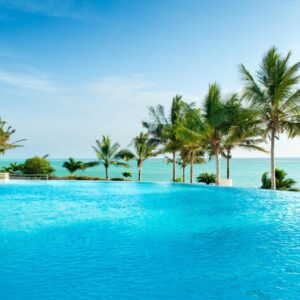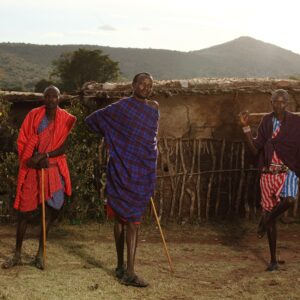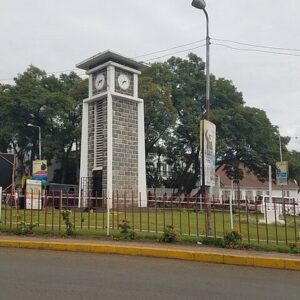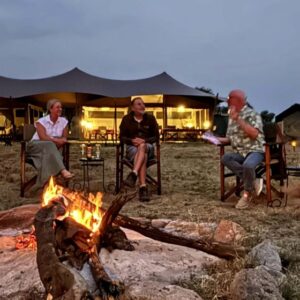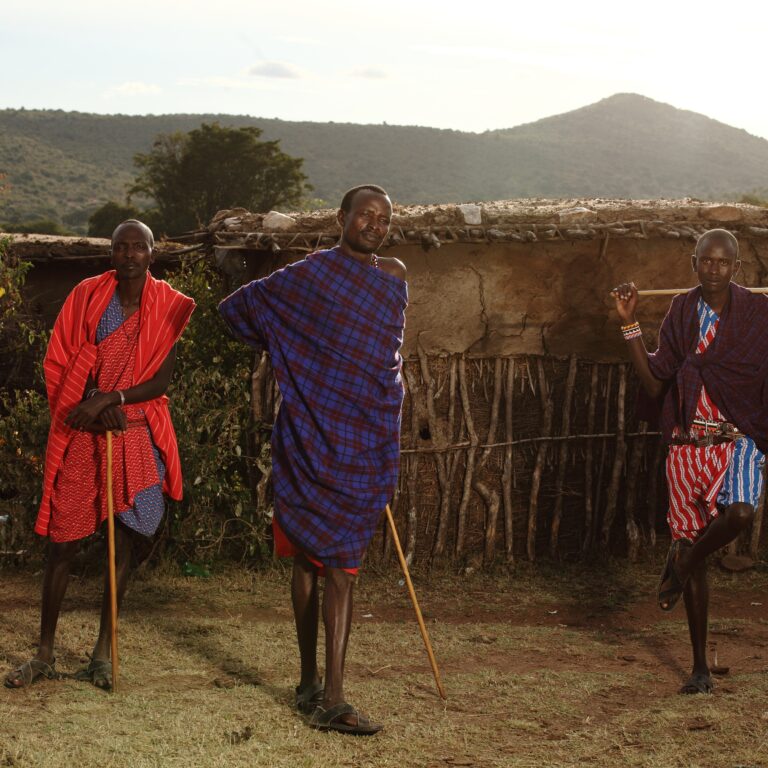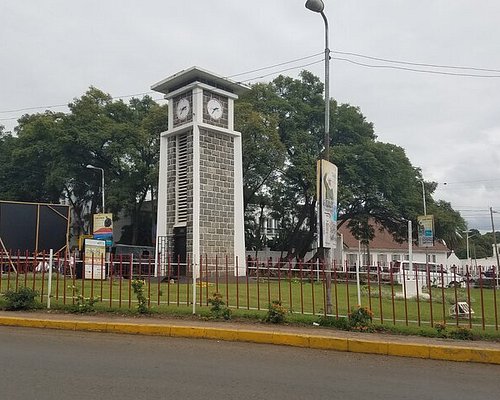On the Machame Route, you “stay” at various designated camping sites as you ascend Mount Kilimanjaro, including Machame Camp, Shira Camp, Barranco Camp, and Karanga Camp, eventually reaching the summit and camping before your descent to Mweka Camp and the gate. There are no hotels; instead, you and your support team will set up tents at these official campsites at different altitudes. The Machame route, affectionately known as the “Whisky Route,” stands as one of the most popular and scenic paths to the summit of Mount Kilimanjaro. This well-trodden trail offers a dynamic journey through a variety of ecosystems, from lush rainforests to alpine deserts, and provides an excellent “climb high, sleep low” profile that significantly aids acclimatization. For those planning an adventure on this magnificent mountain in 2025 or 2026, understanding the campsites and what to expect is essential for a successful and memorable climb.
The Machame route is a camping-only route, meaning you’ll be spending each night in tents provided and set up by your trekking crew. This fosters a sense of camaraderie and truly immerses you in the natural environment of Kilimanjaro. A Night-by-Night Look at the Machame Camps. While visiting Mount Kilimanjaro, you can rest assured that there will be public toilets at each camp stop. But don’t expect too much; you won’t find porcelain loos, marble sinks, or hot water in these primitive public washrooms. Usually bereft of even a door. While there are no proper showers on the mountain, you can still stay fresh and clean by using the provided warm water and soap to wash your hands and face every night. Most climbers also use wet wipes and plenty of deodorant to make sure they feel clean despite not having a shower.
Machame Camp (2,835 m / 9,301 ft)
Your journey begins at the Machame Gate, and the first day’s trek takes you through a dense, misty rainforest. After a 5-7 hour hike covering approximately 11 km, you’ll arrive at Machame Camp. Located on the edge of the montane forest, this camp nestled among tree heathers, offering a cozy and private feel. The air here is often humid, and you’ll be glad for the sturdy tents and a hearty dinner prepared by your cook. Essential Facilities: Accommodations here are in tents provided by your tour operator. They shared toilet facilities, typically in the form of simple pit latrines. A communal dining tent provided for meals, and water, sourced from a nearby stream, boiled and treated by your crew.
Shira Camp (3,850 m / 12,631 ft)
Day two is a steep ascent, transitioning from the rainforest into the moorland zone. The landscape opens up, revealing stunning views of Kibo, the highest peak of Kilimanjaro. After a 4-6 hour trek, you’ll reach Shira Camp, situated on the vast Shira Plateau. This campsite known for its dramatic scenery and colder temperatures, so be prepared to layer up. This is a crucial step in your acclimatization, as you’ve gained a significant amount of altitude. Essential Facilities: Accommodations are again in tents. Basic shared pit latrines and a dining tent are standard. Water is available, but as with all camps on the mountain, it is treated and purified by your crew.
Barranco Camp (3,950 m / 12,959 ft)
The third day is all about acclimatization. You’ll hike from Shira Camp, climbing up to the iconic Lava Tower (4,600 m / 15,091 ft) for lunch. This “climb high, sleep low” strategy is key to preventing altitude sickness. After lunch, you descend into the beautiful Barranco Valley to Barranco Camp. Located at the base of the formidable Barranco Wall, this camp is one of the most spectacular on the mountain, with giant Senecio plants and views of Kibo’s glaciers. Essential Facilities: The camp provides the same basic amenities as previous sites: tents, shared pit latrines, and a dining tent. Due to its location in a valley, it is more sheltered from high winds than Shira Camp.
Karanga Camp (3,995 m / 13,106 ft)
The trek to Karanga Camp is relatively short but exhilarating. The day begins with the challenging but non-technical scramble up the Barranco Wall. This section requires some basic scrambling skills but rewards you with breathtaking views from the top. The trail then winds through the alpine desert to Karanga Camp, a vital acclimatization stop. Many trekkers on the six-day route will bypass this camp, but the seven-day itinerary includes an overnight stay here, which is highly recommended for better acclimatization and a higher summit success rate. Essential Facilities: You’ll find the same core camping setup here. The accommodations are basic, with tents, shared pit latrines, and a communal dining area.
Barafu Camp (4,680 m / 15,354 ft)
Barafu, meaning “ice” in Swahili, is the last camp before the summit. The trek here is a steady, uphill climb through a rocky, alpine desert. Barafu Camp is exposed and often windy and cold, but it offers awe-inspiring views of the Kibo and Mawenzi peaks. This is where you’ll have an early dinner, prepare your gear, and attempt to get a few hours of sleep before the midnight summit ascent. Essential Facilities: This camp is very exposed and rocky. The facilities are minimal, consisting of tents and basic pit latrines. Water is scarce and often carried up by porters. The environment is extremely cold, so a warm sleeping bag is essential.
Mweka Camp (3,100 m / 10,171 ft)
After a grueling summit night, the descent is a long and dusty journey. From Uhuru Peak, you’ll descend to Barafu Camp for a short rest before continuing to Mweka Camp. This is the primary descent camp for the Machame route. Located in the upper rainforest zone, the camp offers a welcome change of scenery and the relief of being at a lower altitude. Here, you’ll enjoy your final dinner on the mountain and a well-deserved rest before the final leg of the journey. Essential Facilities: As with the other camps, tents, shared pit latrines, and a dining tent are standard. The lower altitude here means the air is warmer, and the environment is more comfortable for your final night.
Machame Route: Interesting Facts, Success Rate, and Map
The Machame Route is a popular and moderately difficult, non-technical route on Mount Kilimanjaro, spanning approximately 62 km (39 miles) over 6-7 days, offering good acclimatization and a ~85-90% summit success rate when done in seven days. Known for its scenic beauty, including the famous Barranco Wall scramble, this “Whiskey Route” provides diverse landscapes and good opportunities to view other peaks like Mount Meru.
The “Whisky Route”: The nickname for the Machame route comes from the fact that it’s considered more challenging than the easier, more direct “Coca-Cola” Marangu route.
Most Beautiful Route: Many trekkers and guides consider the Machame route to be the most scenic, offering diverse landscapes and dramatic views.
“Climb High, Sleep Low”: The route’s profile, particularly the day from Shira to Barranco, is excellent for acclimatization, which is crucial for a safe and successful summit.
Machame Route Success Rate
The success rate for the Machame route is significantly higher than shorter, less accommodating routes like the Marangu. For the popular 7-day itinerary, the success rate can be as high as 85-90%, thanks to the extra day for acclimatization. The 6-day option, while faster, has a slightly lower success rate, typically around 70-75%.
Machame Route Map, Elevation, and Altitude
The Machame route begins at the Machame Gate (1,640 m / 5,380 ft). It winds its way around the southern slopes of the mountain, traversing the Shira Plateau and the Southern Circuit. The ascent is on a different path from the descent, which follows the Mweka trail. The highest point is Uhuru Peak at 5,895 m (19,341 ft). The journey involves significant elevation gains and descents, particularly on summit night.
Machame Route Reviews, Costs, and Photos
Reviews of the Machame route are overwhelmingly positive, with trekkers consistently praising the stunning scenery and the effectiveness of the route’s acclimatization profile. The cost of a Machame climb for 2025/2026 can vary widely depending on the tour operator, group size, and level of service (budget, mid-range, or luxury). A typical 7-day trek can range from $1,500 to over $3,000 per person. Group joining options are often more affordable than private treks. Photos from the route are iconic, featuring lush rainforests, the alien-like giant Senecio plants, the challenging Barranco Wall, and the breathtaking glaciers of the summit.
Machame Route Packing List
For the Machame Route, pack sturdy waterproof hiking boots, layers of clothing including base layers, fleece, and a waterproof/windproof jacket and pants, a warm sleeping bag, essential gear like trekking poles, a headlamp, sunglasses, sunscreen, and a large duffel bag (80-100L) for your main gear, plus a smaller daypack for daily essentials. Proper gear is crucial for a safe and comfortable climb. Your packing list should include:
Clothing: Thermal base layers, waterproof and windproof jacket and trousers, fleece jackets, a warm hat, a sun hat, gloves, and several pairs of warm, cushioned socks.
Footwear: Broken-in, waterproof hiking boots are essential. You’ll also want a pair of camp shoes or sneakers for relaxing in the evenings.
Equipment: A high-quality four-season sleeping bag, a sleeping mat, trekking poles, a headlamp with spare batteries, and a daypack.
Hydration: A hydration pack or water bottles with a minimum capacity of 3 liters.
Personal Items: Sunglasses, sunscreen, lip balm, a basic first-aid kit, and personal toiletries.
Miscellaneous: Snacks and treats for energy, a camera, and a waterproof cover for your backpack. Important Documents & Money Passport and visa, Insurance certificate, Tickets and bookings, and Credit card and sufficient cash (USD) for tips.
Machame Route Challenge and Difficulty Level
The Machame route its considered a moderately difficult climb. It is more challenging than the Marangu route due to its steeper sections and longer daily treks. The primary difficulty, however, lies in the high altitude. While the “climb high, sleep low” strategy significantly aids acclimatization, the physical toll of climbing at such elevations is significant. Trekkers should have a good level of physical fitness, including cardiovascular endurance and strength, to handle the daily ascents and the demanding summit night. The scramble up the Barranco Wall is a fun challenge, but it is not technically difficult and does not require rock climbing skills.
Machame Route Starting and Ending Point
The Machame route starts at Machame Gate, located on the southern side of Mount Kilimanjaro. The trail is one-way, meaning you do not descend the same path you ascended. The descent is via the Mweka trail, and the trek officially ends at Mweka Gate, also on the southern side of the mountain. From Mweka Gate, you will be transported back to your hotel in Moshi or Arusha.
The Machame route offers an unparalleled Kilimanjaro experience. By familiarizing yourself with the camps and preparing your gear, you’re setting yourself up for an incredible adventure that will culminate in a memory you’ll cherish forever. When you trek Mt Kilimanjaro, you sleep in one of two places: in a mountain hut or in a tent. Most trekkers sleep in tented camps, as only the Marangu route offers hut accommodation. Fortunately, things are made easier for you as porters carry all of the camping equipment and also set up camp for you.
Best Time for Machame Route
When to Climb Machame Route on Kilimanjaro – Best Months for Climbing? The best time to climb the Machame route is during the dry season. There are two distinct dry seasons in Tanzania: January to March. This period is generally dry, clear, and warmer than the other dry season. It’s an excellent time for climbing, but the weather can still be unpredictable. June to October: This is the most popular time to climb Kilimanjaro. The weather is typically dry and clear, offering fantastic views. However, this also means the routes are more crowded.
It’s ultimate climbing Kilimanjaro Tours generally recommended to avoid the two rainy seasons: April and May (long rains) and November and December (short rains), as the trails can be muddy, visibility can be poor, and the risk of bad weather is higher. The Machame route offers an unparalleled Kilimanjaro experience. By familiarizing yourself with the camps and preparing your gear, you’re setting yourself up for an incredible adventure that will culminate in a memory you’ll cherish forever.
Where to Stay in Kilimanjaro?
Accommodation around Mount Kilimanjaro is mainly found in Moshi and Arusha, offering options for all budgets. Moshi is closest to the mountain, ideal for climbers, with guesthouses, mid-range hotels, and luxury lodges. Arusha, a larger city, provides upscale hotels and better amenities, often used for safari extensions. Popular choices include Chanya Lodge, Aishi Machame Hotel, and Kaliwa Lodge. Most climbing packages include pre- and post-trek stays, ensuring comfort and convenience before and after your Kilimanjaro adventure.
Why Climb the Machame Route on Kilimanjaro
Climbers choose the Machame Route for Kilimanjaro because it offers a highly scenic and adventurous camping experience with a good acclimatization profile and high success rates, especially when extended to 7 days. Known as the “Whisky Route” for its challenging, rewarding nature, it features diverse landscapes, including rainforests and moorlands, and the exciting scramble up the Barranco Wall, making it a popular and highly recommended choice for fit and adventurous hikers. Choosing the Machame route offers a superior Kilimanjaro experience for several key reasons:
Stunning Scenery: The route is widely considered the most scenic on the mountain. It takes you through a breathtaking variety of landscapes, from lush rainforests to the vast, lunar-like Shira Plateau and the surreal alpine deserts.
Superior Acclimatization: The Machame route’s “climb high, sleep low” profile is a game-changer. By ascending to a higher altitude during the day and descending to sleep, your body adjusts more effectively to the lack of oxygen, significantly reducing the risk of altitude sickness and increasing your chances of reaching the summit. The 7-day itinerary, in particular, offers an extra day for acclimatization, making it a highly recommended choice.
Higher Summit Success Rate: The combination of an effective acclimatization schedule and a longer itinerary results in a higher success rate compared to shorter, more direct routes. This makes Machame a more reliable and safer option for those who are serious about reaching Uhuru Peak.
Sense of Adventure: The camping-only nature of the Machame route, coupled with the fun challenge of the Barranco Wall, provides a genuine sense of adventure and immersion in the natural environment. It’s a more rugged and authentic experience than routes with permanent huts.
In conclusion
The Machame route offers an incredible opportunity to experience the majesty of Mount Kilimanjaro. With its diverse landscapes, excellent acclimatization profile, and a series of unique campsites, it’s a journey that challenges and rewards in equal measure. Proper planning and preparation for the camps and the trek itself will ensure you are well-equipped to face the challenge and create memories that will last a lifetime. Tips: The more days you spend on the mountain acclimatizing, the better your chances of reaching the top. Trekkers who spend only 5 days on Kilimanjaro have the lowest success rate, while those who spend 8 or 9 days have a much better chance of standing on the Roof of Africa.

